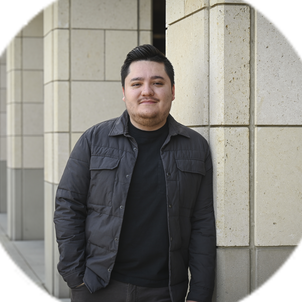At Stanford's Living Matter Lab, one of my areas of interest is the brain and how we can create mathematical relationships that connect the stress that brain tissue experiences – from degenerative disease or blunt force trauma – to the resulting deformation of the tissue. I also work with Professor Ellen Kuhl and Professor Mathias Peirlinck to explore the differences between male and female hearts. The female heart is not simply a scaled-down version of the male heart; there are differences in its geometry and function that can affect the diagnosis of heart disease.
Biology wasn’t my favorite subject in high school. I loved math and physics. As an undergraduate, I was attracted to biomedical engineering because it allowed me to not only explore the intersection of engineering and medicine, but also focus on creating solutions to medical problems that affect friends and family. Later, as a rising junior, I attended a National Science Foundation-funded summer program at the University of Minnesota, where I researched the mechanics of the fingers’ touch receptors in Professor Victor Barocas’ lab with a wonderful graduate student mentor. My only programming experience up to then had been a single class that scared me away, but at this program I realized I could sit at a computer and do really amazing work and see the results immediately. It was so satisfying to find a way to take my love of math and physics and apply it to everything I did in the lab. I suddenly realized that this niche – computational biomechanics – existed. It was eye-opening.
Using neural networks and machine learning to help solve biological questions of how the body and its tissues function is important. Currently, for example, cardiac disease in women is frequently overlooked in routine exams; it is diagnosed later and with more severe symptoms than in men. If we want to be able to produce good computer simulations of the heart, we have to have good female heart models that incorporate sex differences. Studies like ours can, hopefully, motivate industry to create them. When it comes to the brain, the information we learn about the mechanics of brain tissue can be used by car companies working to develop safer vehicles, researchers studying sports-related concussion to develop safer helmets, or scientists looking at the effect of tumors that compress brain tissue.
I’ve experienced a lot of transitions in my life, from starting college and coming to terms with my queerness to going to graduate school and realizing that I am nonbinary. The process of figuring out these transitions has not always been easy, but I have gained so much academic and personal support along the way. As I become more self-aware and more open about who I am and what I love, I find that I’m always excited to come to my office and do this work. The interdisciplinary field of biomedical engineering is very supportive and collaborative, and I find that the people working in it love what they do and love talking with each other. I think that’s because we all know that our research has the potential to help so many people, which seems to give us energy. For me, it’s great to know that my work may one day impact lives and translate to real human good.
Related spotlights

Adrienne Propp

Lara Weed

